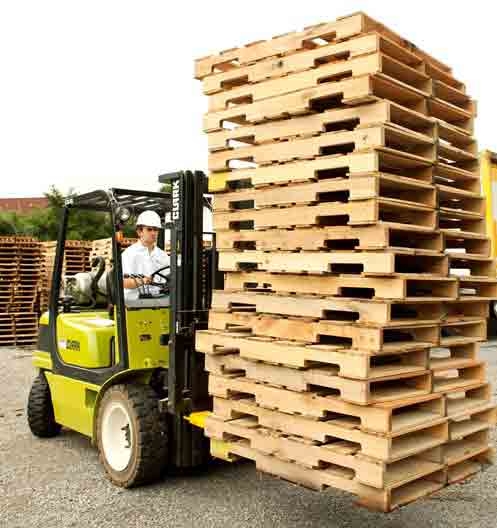Investigation of the disposal and recovery of wood pallets and wood packaging in the United States

By Zachary Shiner and J. Kate Bridgeman
This study was performed in order to acquire market information on the disposal and recovery of wood pallets and wood packaging in 2016.
Each year a large number of wooden pallets are anufactured, recycled, and disposed of during the transportation of goods throughout the United States.
The production of these pallets consumes a significant mount of wood, and a large number of
pallets end up in landfills at the end of their useful life cycle. However, many of these pallets can be recovered — they can be repaired; broken apart into components; ground into mulch, fuel, or animal bedding; or used by landfills in their day-to-day operations.
The purpose of this research was to investigate the total number of pallets and crates reaching landfills in the United States as well as to gain a better understanding of the overall waste stream.
This was done by surveying all licensed municipal solid waste (MSW) and construction and demolition (C&D) landfills in the continental United States, with a questionnaire sent to each of these landfills. The entire study was intended to build upon previous Virginia Tech landfill surveys conducted in 1995 and 1998.
Overall, it was found that the average MSW facility in the United States received 185,077 tons of waste and the average C&D facility received 74,911 tons. This results in a total national estimate of 253 million tons of MSW waste and 76.9 million tons of C&D waste.
Many pallets end up in landfills, but they can be recovered if they are kept separate from other types of waste and diverted to a wood waste recovery area, since 90% of pallets are built from wood. In fact, approximately 58% of the 89.5 million pallets that were landfilled ended up being recovered, repurposed, or reused.
Pallets have such a high rate of recovery as the market for recycled pallets has grown significantly over the past few decades. The number of recovered, repaired, or remanufactured wooden pallets has increased 160% from 1995 to 2016. Approximately 75% of wooden pallets are now recycled at the end of their useful life.
Landfills that recover wooden pallets indicate a wide variety of uses: giving them away to residents, using them “as-is” for their own operations, or grinding them into mulch to be sold or given away, used as material for composting, or used within the facility as road base or daily cover.
Keeping pallets out of landfills helps to reduce the demand for virgin lumber and preserves landfill space while also generating economic activity.


